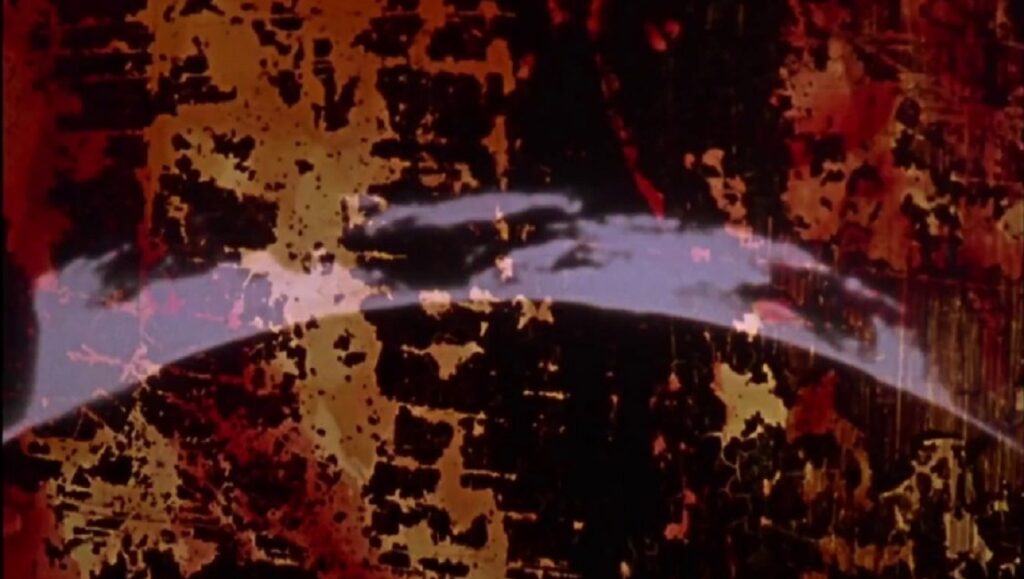After three title cards – “DOG STAR MAN,” “BY BRAKHAGE,” “PRELUDE” – written in an esoteric font, we spend nearly a full minute with a continuously moving, dim burgundy screen. Small splashes of momentary indigo make their way into the frame for nanoseconds, brief preparation for the journey that lies ahead. In total silence (or ideally with the sound of the projector in the same room with you), tangible elements make fleeting appearances; flashes of fire, speckles of traffic lights at night. Fire, water, air, and greenery meld into a single element: consciousness. Next, there is refracted light. The moon, a vagina, a penis, a dog’s fur, all shot in close-up, are interspersed with abstract colors, textures, and scratches in a flurry of constant transmogrification. Dog Star Man is the culmination of Brakhage’s learned powers at the point of its completion in 1964, leaning ever further from the jumbled, though concrete, reality of Anticipation of the Night (1958) into pure abstraction, marking a distinct point prior to the director’s full leap into completely cameraless works. It’s an essential title, not only for the avant-garde, but for the whole of film history.
Dog Star Man is structured into five chapters: the Prelude and Parts 1-4. According to Fred Camper, “The parts can also be viewed individually,” which is made clear by the opening and closing title cards on each part. He also notes a particular formula to the progression of layered imagery: “The prelude has two layers of superimposed imagery, and parts two, three, and four have two, three, and four layers, respectively.” Yet all of this is but mere description, and what makes Brakhage’s efforts so consistently compelling and endlessly re-watchable is the deep dive his work takes into the unknowability cast by an absence of language — as a director, Brakhage was wholly intent on trading in verbal communication for visual.
Here, he appears as a Sisyphian, axe-wielding woodsman fighting a snowstorm, ever climbing the hill, accompanied by his trusty dog. These sequences were shot by his wife at the time, Jane Wodening, star of Window Water Baby Moving (1959) — and featured in Barbara Hammer’s JANE BRAKHAGE (1974) and Nathaniel Dorsky’s Apricity (2019). In fact, Jane’s creative input on the film is significant:
“Whenever I had to be photographed from any distance Jane would have to do it. Then at times she went out with the camera to get things that I had some sense she could photograph better than I and with more total clarity. Once I was ill and couldn’t get out to shoot as the sun was setting and the sky was meaning what I sensed was needed at a certain moment in the film, Jane rushed out to get it, bringing back even more than what I had hoped for. So I tended more and more to give her any chance to add her view to mine for a more total view.” (Metaphors on Vision, pg. 107)
Dog Star Man: humanity, our closest companions, and the infinite, unknowable universe that surrounds us.
Part of Kicking the Canon – The Film Canon.


Comments are closed.